|
|

Emiru is probably remembering that everyone at school still thinks she's nuts.
Now well past the halfway mark, Hugtto! Precure is better than it has any right to be. Based on the number of strikes it normally would have against it, I shouldn't be enjoying it so much. Namely, it's got a magic baby. It has a shrimpy Cure. And it has my least favorite battle costumes of the entire franchise. It turns out, though, that the magic-baby scenes are not as objectionable as I had feared (although I could still do without them). The battle costumes are tragic; I guess that's not going to change. On the plus side, though, the shrimpy Cure is tops.
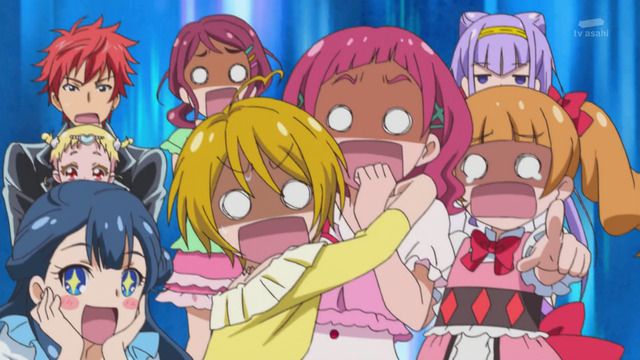
Actually, most of the cast is pretty good.
Cure Muse basically ruined shrimpy Cures for me. Cure Ace, I guess she was okay. Aguri was definitely more endearing than Ako. Emiru, though, as Cure Ma Chérie? Emiru is frickin' great. It's mostly because she's completely neurotic, which we got to see ahead of time in her two really good pre-transformation introductory episodes. It also helps that she's partnered with RUR-9500. The two of them bring out the best in each other's scenes. I suppose I can't quite say the same thing about Cure Amour, although they are fine together as well. After all, they do have beam-rifle guitars.
Posted in Hugtto! Precure | Tags: Androids, Figure Skating, Kugimiya Rie, Mahou Shoujo, Poor Little Rich Girls, Summer 2018 | Permanent Link
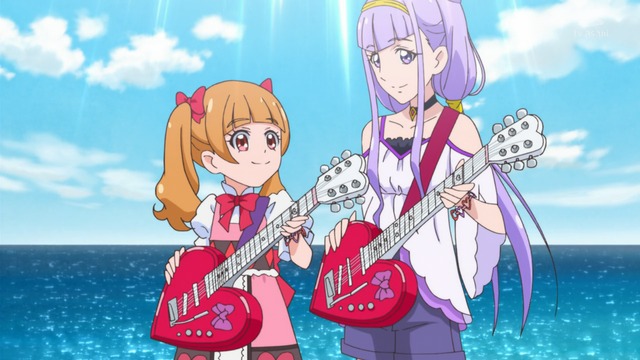
The matching guitars are actually magic beam rifles. This is not a joke.
P.S. Spoilers.
Seven or eight of the shows I plan to watch during the Summer 2018 anime season are shows continuing from Spring 2018 or sequels. Specifically, Overlord III, One Room 2, and Cinderella Girls Gekijou 3rd Season are sequels, and the shows continuing from last season are Detective Conan, GeGeGe no Kitarou, Major 2nd, Hugtto! Precure, and possibly Piano no Mori.
(more…)
Posted in Cinderella Girls, Hugtto! Precure, Major 2nd, One Room, Overlord, Piano no Mori | Tags: baseball, Bedrooms, Bend Her Over a Kotatsu, books, Fan Service, Figure Skating, Gainax, Hanakana Distortion Field, Hanazawa Kana, Legs that go up to her neck, Light Novels, Mahou Shoujo, Season Introduction, Sequels, Short Shows, Shows that never end, Spoilers, Summer 2018, Superlovely Character Designs | Permanent Link
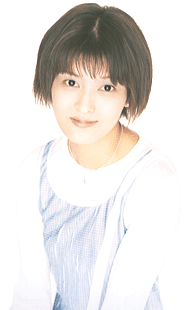
Kawasumi Ayako.
Origins of the Ayako Doctrine: Circa 2002, with J.C. Staff riding its recent successes of Tiny Snow Fairy Sugar and the Azumanga Daioh anime, members of the Something Awful anime forum developed the J.C. Staff Clause (i.e., an anime produced by J.C. Staff should be watched), and invoked it when speculating about the quality of unreleased shows.
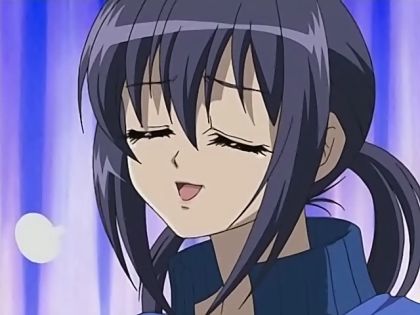
Ginban Kaleidoscope.
As an aside, "J.C. Staff Clause" itself likely benefited from its name's similarity to the "J.C. Crew," a band of Internet miscreants with ties to Something Awful's forums. But I digress.
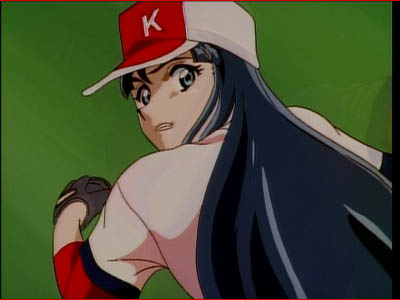
Princess Nine.
Later (likely 2003) a member (probably ricequeen) of the channel #raspberryheaven or its offshoots applied the J.C. Staff Clause reasoning (an anime by J.C. Staff will be good) to his fervent devotion to the seiyuu Kawasumi Ayako, bringing the "Ayako Clause" to the #raspberryheaven vernacular (and effectively adding the clause itself to the Raspberry Heaven common law).
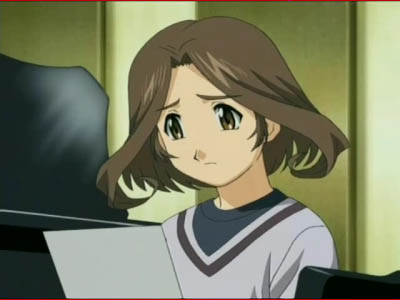
Piano.
In 2004, a participant in #marimite, Evirus (yes, that's right), unilaterally determined that the principles defined by the existing variants of the Ayako Clause, as practiced, constituted dogma: THE AYAKO DOCTRINE.
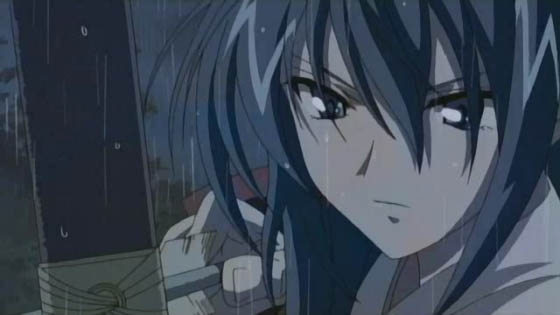
Kannazuki no Miko.
The Ayako Doctrine simply dictates the following axiom:
Any anime featuring Kawasumi Ayako should be watched.
Note that the Ayako Doctrine does not claim every anime featuring Ayako Kawasumi will be good, nor does it dictate that these anime must be watched to completion. The Ayako Doctrine merely compels the viewer's consideration, reasoning that her presence can only be positive. Ergo, ceteris paribus, Ayako anime should be prioritized over other shows.
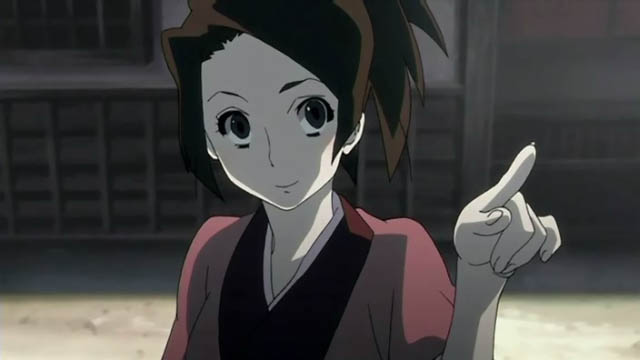
Samurai Champloo.
So ordered.
Posted in AYAKO DOCTRINE, E/N, RECOMMENDATIONS | Tags: AYAKO DOCTRINE, baseball, Figure Skating, J.C. Staff | Permanent Link
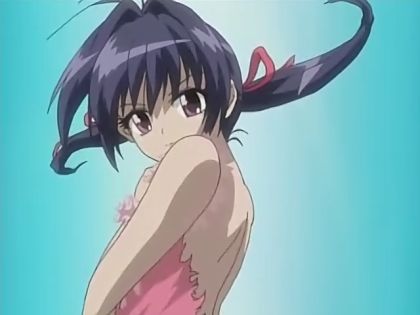
Sakurano Kazusa
After seeing it mentioned in the Animeslice blog, I grew curious about Ginban Kaleidoscope. This show is the very model of the AYAKO DOCTRINE at work. Mamiko Noto, Chiwa Saito, and the voice of Hibiki from VanDread also contribute to Ginban Kaleidoscope, if you need additional reasons to watch it.
The show seems to be a shoujo sports anime, but is heavy on neither shoujo nor sports anime idioms or cliches. Kawasumi Ayako plays the lead character, Sakurano Kazusa, an aspiring figure skater trying to make the Winter Olympics. She becomes possessed by the ghost of Pete Pumps, a Canadian stunt pilot who died in a plane crash.
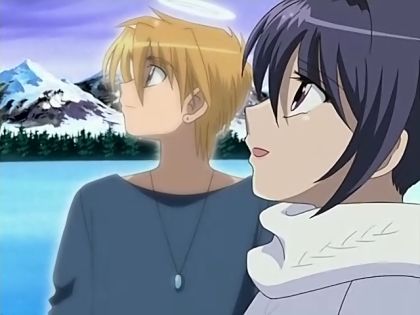
Pete and Kazusa
I'm no fan of figure skating, even though I thought the Tanya Harding v. Nancy Kerrigan drama of yore was great entertainment of the highest order. Despite my ambivalence to figure skating, I found Ginban Kaleidoscope pretty interesting, if more for the verbal gymnastics than anything else. Hearing Ayako's English outburst in the first episode sold me on the show, and her brief conversation with Mamiko Noto in English was icing on the cake. I should note that Mamiko speaks in Russian in Ginban Kaleidoscope, although she doesn't have nearly enough lines.
Thanks to the ever-welcome Ayako Kawasumi, I didn't miss Mamiko's presence much. Ginban Kaleidoscope is a surprisingly dialogue-heavy show, featuring lots of banter between Kazusa and Pete. I can't exactly claim this is Ayako's best work, but it is a good part in that it affords her the opportunity to do quite a bit of ranting, which I can't get enough of. Ayako Doctrine adherents can't afford to overlook Ginban Kaleidoscope. Seriously, it has Ayako bitching people out in English, Mamiko speaking Russian, and peculiar mix of background characters regularly speaking thickly-accented semi-Engrish and fluent English. What's not to love?

Sakurano Kazusa
Ginban Kaleidoscope is a short 12-episode series with a heartful, realistic ending. Well, as realistic as you could hope for a show about an Olympic-level Japanese figure skater possessed by the ghost of a Canadian pilot. I didn't have any objections to the ending (significant in that the majority of anime series seem to falter with regard to their endings), and I found the series to be an enjoyable and engaging diversion from more heavy-handed, serious fare. For example, the "waitress" episode was cute (although I would have liked a "maid" episode as well as a nod to Ayako Kawasumi's automatic maiden sweetness in Mahoromatic), and seeing Kazusa grow to accept Pete's presence over the course of 12 episodes was satisfying. Perhaps as one final compliment—I would have liked more episodes; Ginban Kaleidoscope left me wanting more.
Posted in AYAKO DOCTRINE, Ginban Kaleidoscope, RECOMMENDATIONS | Tags: AYAKO DOCTRINE, Canadians, Figure Skating, Mamikore, tsundere | Permanent Link
|
|














